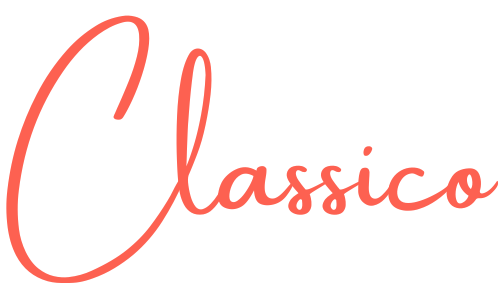9 Different Types of Web Applications with Use Cases
In today’s digital landscape, web applications have become a cornerstone of modern business operations and daily user experiences. From simple informational pages to complex, data-driven platforms, web apps provide scalable and accessible solutions across all industries.
Understanding the types of web applications and their use cases is essential for making informed decisions—whether you’re building a new product, optimizing internal processes, or planning digital transformation.

-
Static Web Applications
Overview:
Static web applications are basic, fixed-content apps where the content is pre-rendered and delivered to the browser exactly as stored.
Key Characteristics:
- Fast load times and low server cost
- Minimal development complexity
- Secure due to no server-side interaction
Common Use Cases:
- Personal portfolios and resumes
- Event or campaign landing pages
- Brochure-style corporate sites
Example: An artist’s portfolio with simple image galleries and bio pages.
-
Dynamic Web Applications
Overview:
Dynamic web apps serve content that changes in real-time based on user input, preferences, or live data from the server.
Key Characteristics:
- Database integration for content generation
- Supports interactivity, user logins, and dashboards
- Backend logic handles business rules
Common Use Cases:
- News sites with real-time updates
- Social media platforms and user communities
- Booking systems and portals
Example: Facebook, where feeds, comments, and alerts change based on user behavior.
-
Single Page Applications (SPA)
Overview:
SPAs deliver a seamless, app-like experience by loading a single HTML page and updating content dynamically using JavaScript.
Key Characteristics:
- Improved user experience through fast navigation
- Reduces server load
- Frontend-heavy architecture using frameworks like React or Vue
Common Use Cases:
- Email clients
- Project management tools
- Financial dashboards
Example: Trello, which dynamically updates tasks, boards, and users without full page reloads.
-
Progressive Web Applications (PWA)
Overview:
PWAs blend web and native mobile features. They can be installed on devices, function offline, and send notifications.
Key Characteristics:
- Works offline via service workers
- Mobile app-like UX with home screen installation
- Push notifications and background sync
Common Use Cases:
- E-commerce for mobile-first customers
- Media outlets enhancing mobile engagement
- Travel and service booking platforms
Example: Twitter Lite provides a full-featured, fast-loading experience even with poor connectivity.
-
E-commerce Web Applications
Overview:
These web apps support the buying, selling, and management of products or services online.
Key Characteristics:
- Secure payment systems (PCI-DSS compliant)
- Inventory and customer account management
- Product search, reviews, and recommendation engines
Common Use Cases:
- Online marketplaces
- Direct-to-consumer brand stores
- Digital product and subscription services
Example: Shopify-based stores or Amazon, offering a comprehensive digital retail experience.
-
Portal Web Applications
Overview:
Portals offer centralized access to multiple systems or services through user-specific dashboards and role-based content.
Key Characteristics:
- User authentication and role-based access
- Integration with internal systems (e.g., ERP, LMS)
- Multi-functional dashboards
Common Use Cases:
- Student and academic portals
- Corporate intranet solutions
- Healthcare patient portals
Example: A university portal enabling students to register for classes, access resources, and track grades.
-
Content Management Systems (CMS)
Overview:
CMS platforms enable non-technical users to manage website content with ease.
Key Characteristics:
- Admin panels for editing content
- Theming and template control
- Plugin support for feature expansion
Common Use Cases:
- Blogs and online magazines
- Business websites
- NGO or community initiative platforms
Example: WordPress or Joomla sites offering blog management and multi-user roles.
-
Social Networking Applications
Overview:
These web apps enable social interaction, content sharing, and communication between users.
Key Characteristics:
- Real-time notifications and messaging
- Content creation tools (media, text, video)
- Social graphs and algorithms for content personalization
Common Use Cases:
- Public or niche social networks
- Discussion forums and interest-based groups
- Livestream and video-sharing platforms
Example: Instagram for sharing visual content and stories among followers.
-
Enterprise Web Applications
Overview:
Enterprise web apps streamline internal operations, enhance collaboration, and manage vast datasets.
Key Characteristics:
- Complex data workflows and reporting
- API integrations with third-party business tools
- Role-based access and audit trails
Common Use Cases:
- CRM systems like Salesforce
- Internal project and task management tools
- HR and payroll automation platforms
Example: Asana for task management across large teams or SAP for enterprise resource planning.

Bonus: Emerging Trends in Web Application Development
-
AI-Driven Web Applications
- Chatbots, virtual assistants, recommendation engines
- Predictive analytics for user behavior
-
Serverless Architectures
- Run backend logic without provisioning servers (e.g., AWS Lambda, Vercel Functions)
- Scales on demand and reduces operational overhead
-
Real-Time Capabilities
- WebSockets and push technology for instant updates
- Ideal for live chats, stock tickers, or collaborative tools
-
Low-Code/No-Code Web Platforms
- Empower businesses to deploy MVPs faster without deep dev knowledge
- Platforms: Bubble, Webflow, OutSystems
-
Headless CMS & JAMstack Architecture
- Decouples front-end from back-end
- Offers flexibility and speed with tools like Strapi, Contentful, and Next.js
How to Choose the Right Type of Web Application?
Before selecting a web application type, evaluate:
- Business Objectives – What goal will the web app help you achieve?
- Target Users – Who are they and what functionality do they expect?
- Project Scope – What’s the desired timeline and feature set?
- Scalability Needs – Will this app serve hundreds, thousands, or millions?
- Budget & Maintenance – Can you support future updates and scaling?
- Security Compliance – Do you handle sensitive user or payment data?

Final Thoughts
The web application ecosystem is both diverse and dynamic, providing flexible options for every organization—from freelancers and startups to global enterprises. Each type of web app serves a distinct purpose, and selecting the right one is crucial for achieving your digital goals.
your vision and business needs. Ready to bring your web app idea to life? Let’s connect and start building the future together.


